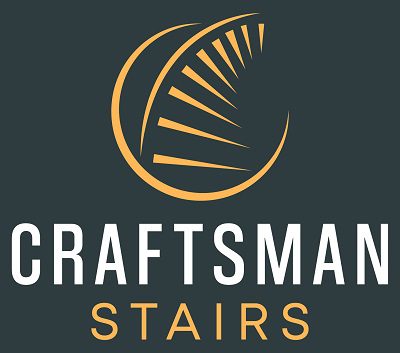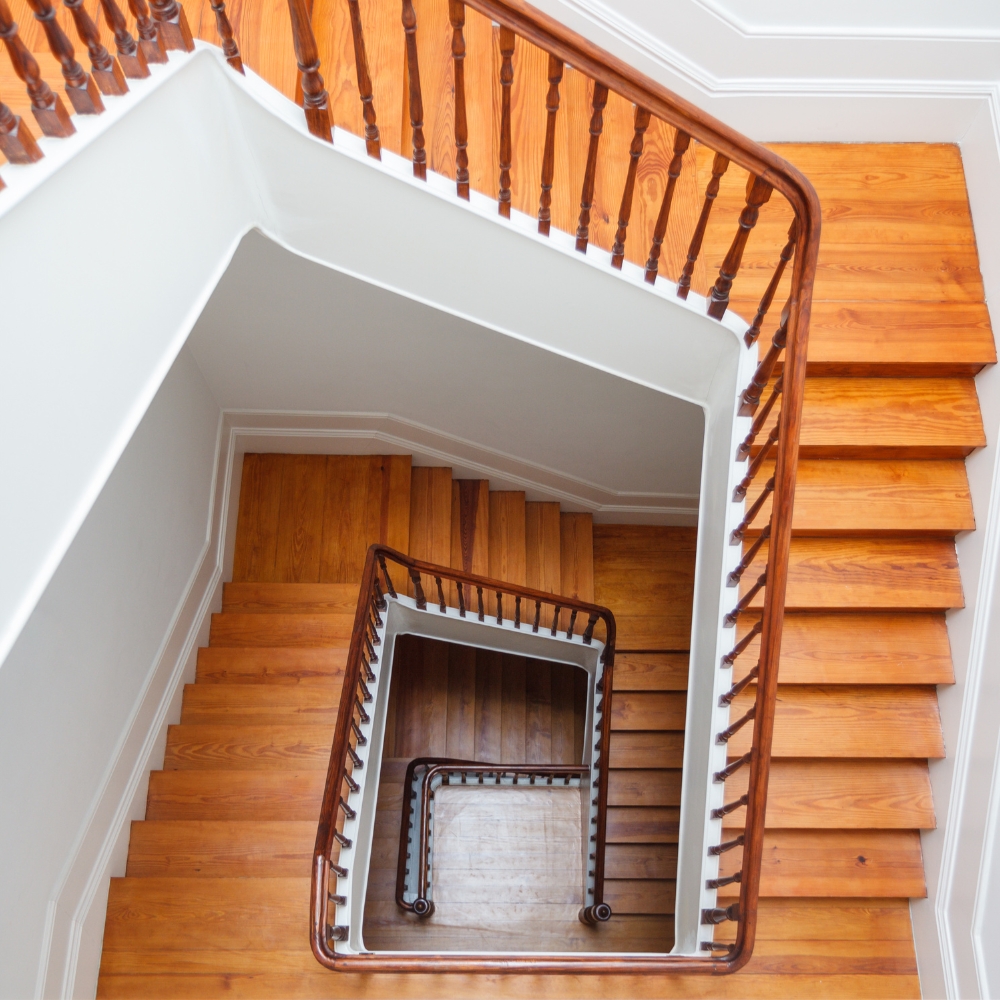Do you know if your workplace handrails meet all Queensland laws? It’s essential to know the handrail requirements by Queensland Building Codes. Our guide helps you understand stair railing standards and Australian handrail specs. Learn how well-designed handrails can prevent falls on stairs, keeping the workplace safe.
This guide focuses on the need for uniform stair heights and depths as per AS1657 (2018). These standards help avoid trip hazards. We also explain the need for anti-slip steps, correct stair angles, and landing requirements.
The Australian Building Code says handrails must be at least 865mm high from the stair treads or ramp surface. But, the best height is between 900mm and 1100mm. This height ensures safety, offering the right support and preventing falls. For high platforms and landings, over 4 meters up, there are extra balustrade rules for extra safety.
Handrails are a must for stairs, platforms, or landings over 1 meter high. This is about 4 risers and 3 treads on a compliant staircase. So, even small height changes need handrails to avoid accidents. Ramps over 2 meters high also require safety measures.
In health-care and aged care facilities, handrail rules are specific. Class 9a buildings need handrails on one corridor side. Class 9c buildings need them on both sides. These rules help keep vulnerable people safe while moving around.
For both residential and commercial places, knowing Queensland’s handrail rules is key for safety and following the law. By following these guidelines, builders and property owners can lower fall risks and protect everyone.
Understanding Queensland Building Codes for Handrails
The Building Codes Queensland demands that specific rules be followed for the safety of handrails. We’ll look into the various handrails, key safety measures, and adjustments needed for certain areas. These important rules are for both houses and commercial handrail compliance.
Types of Handrails and Their Uses
In Queensland, there are many types of handrails for different places. For houses, residential handrail guidelines suggest designs that are safe yet good to look at. For businesses, commercial handrail compliance is about sturdy handrails that stand up to a lot of use.
Basic Safety Standards
Handrails should be between 900mm and 1100mm high from the floor or stair tread edge, as per balustrade safety regulations. Stairs wider than 1000mm need a handrail on both sides for safety and easier use. They must also give enough space, about 50mm, away from walls or other obstacles.
Stairs should have at least one handrail as a support aid. They are best designed with an incline of 30 to 38 degrees.
Also, stairs must have slip-proof and clearly seen steps, with proper lighting to avoid shadows or glare. This is key for balustrade safety regulations.
Adjusting Handrail Specifications for Different Environments
Changing handrail details is key to meet balustrade safety regulations in various places. In businesses, keeping to commercial handrail standards is crucial for more safety. However, residential handrail guidelines combine function and beauty to boost both safety and home look.
By sticking to these guidelines and knowing why they matter, we can keep to building codes Queensland and make sure handrails are safe.
Design Specifications and Dimensions
Knowing the design specs and dimensions for handrails is key for safety and meeting Australian rules. We’ll look at height standards, how much space is needed, and how to make them slip-proof and easy to see.
Height Standards
The Australian Building Code states the lowest handrail height should be 865mm from the stair tread’s edge or a ramp’s surface. But, it’s a good idea to have handrails between 900mm and 1100mm tall. In Australia, staircases must have handrails at least 865mm high, as per the stair railing standards.
Clearance and Space Requirements
Having enough clearance and space around handrails makes them more comfortable and safe. They need to be at least 50mm away from any wall. This is very important in hospitals and aged care facilities, where handrails must run continuously.
- Any platform or landing more than 4 metres high must have extra safety railings.
- Guardrails for high landings must be at least 1000mm tall to prevent falls.
Slip Resistance and Visibility Factors
To prevent accidents, it’s crucial that handrails and steps are made with materials that don’t slip easily. Good visibility, especially in poorly lit areas, is also important. This can be done with the right lighting and contrast, helping fulfil disability access requirements for handrails.
Corridors should have handrails about 900mm high. There are also specific rules for dowel handrails:
- A dowel handrail with a 40mm diameter needs to be mounted 900mm apart on the wall.
- If the dowel handrail is 50mm thick, it should be mounted every 1200mm.
Handrail Requirements QLD for Residential Properties
In Queensland, homes must follow rules for installing handrails to keep everyone safe. These are detailed in the Australian Standards and Queensland Building Codes.
Staircase Handrail Requirements
As per Australian Standards 1657 (2018), stairs must have a minimum rise from 130mm to 225mm. Each step should be between 215mm and 355mm. Handrails are required to be between 900mm and 1100mm high above each step.
A stair sequence should have at least two but no more than 18 steps. Stairways must have landings that are as wide as the stairway itself. Lights should be placed carefully to prevent shadows and glare, with additional lighting advised at handrails if necessary.
Keeping stairs and handrails in good repair is key to safety.
Balcony and Deck Handrails
Balconies and decks higher than one meter off the ground need balustrades or railings by law. They must be at least one meter high and not easy to climb if they’re over four meters up. Also, openings in balustrades can’t be wider than 125mm.
Aluminium is often chosen for these because it doesn’t rust and is easy to look after.
Special Considerations for Elderly and Disabled Access
Homes must also be safe for the elderly and disabled. Handrails must meet disability access requirements handrails to be reachable and safe. In aged-care buildings, corridors need handrails on both sides with enough space from the wall.
Handrails on stairways and ramps should have supports no more than 900mm apart for small ones and 1200mm apart for larger ones. This follows the residential handrail guidelines.
By sticking to these balustrade safety regulations, homes in Queensland will be safer and more accessible for everyone.
Compliance for Commercial Handrail Installations
It’s important to make sure handrails in commercial places are safe and easy to use. This part talks about the rules for handrails in different places like hospitals, shops, and factories. We look at what each place needs to do to be safe.
Health-care Facility Specifications
Handrails in hospitals need to follow strict rules for the safety of patients. They must be at least 50mm away from the wall and go all the way along corridors used by patients. This is laid out in the AS1428.1-2009 standards. In Queensland, handrails have to be between 900mm and 1100mm high. This makes them easy to reach and helps people stay steady.
Office and Retail Requirements
Offices and shops also have to meet specific safety rules for handrails. Handrails need to be the right height, between 865mm and 1100mm, on stairs and platforms above 1 meter. They should also be made so that no big gaps exist, wider than 125mm, to stop accidents. This follows the handrail requirements QLD.
Industrial Site Handrail Standards
Factories and other industrial sites have their own tough rules for handrails. They need to stick to the Australian Standard AS1657-2018 to keep workers safe. If a platform or landing is over 4m high, it must have a special railing that’s hard to climb. Ramps over 2m high must have handrails too. They also need a gap of at least 50mm from any surface. This follows the rules for commercial handrail compliance.
Maintaining and Inspecting Handrails
Keeping handrails in top shape is key to meeting Queensland’s safety rules. Regular checks help spot any loose parts. This keeps handrails working right and safe to use. It’s important to quickly clean up any spills near stairs to prevent accidents.
Handrails need to be a certain height, between 900mm and 1100mm off the ground. Australian Standards 1657 (2018) says so. They also need enough space from walls. Regular checks make sure they’re properly attached and not rusty. Near water, like pools, choosing materials that don’t rust is smart.
Good lighting and clear signs are a must for safety. They help avoid trips by making stairs easier to see. Different materials or colors on handrails and steps can also guide people safely. Anti-slip step edges help reduce the chance of falling.
Having a system to quickly deal with hazards is crucial. Regular checks on handrails and keeping records can spot issues early. Taking care of problems fast keeps everyone safe. This includes making sure balconies and decks are solid. Regular checks and maintenance show a true commitment to safety.
FAQ
Q: What are the basic handrail requirements in Queensland?
A: In Queensland, handrails must be 900mm to 1100mm high above the steps or floor. They need a clear space of at least 50mm from the wall. They should also be slip-resistant and clearly visible to keep people safe.
Q: What are the types of handrails and their uses?
A: Handrails come in different styles and materials like wood, metal, and glass. Their design and use depend on where they are. For homes, looks might be key. But in places like hospitals, safety comes first, with a need for handrails that people can’t trip over.
Q: How do the Queensland building codes address handrails?
A: The building codes in Queensland want handrails to be strong, not slippery, the right height, and easy to see. They use standards such as AS1657 (2018) and AS1428.1-2009. These rules help make sure handrails are safe and easy for everyone to use.
Q: What are the specific design specifications for handrails?
A: Handrails must be 900mm to 1100mm high, with at least 50mm of space from walls. The surface should stop people from slipping. And they need to be visible. This helps avoid accidents.
Q: What are the key safety standards for handrails?
A: Safety rules for handrails focus on making sure they can support weight, prevent slips, are high enough, and are visible. This helps stop falls and accidents on stairs in places like homes and offices.
Q: How should handrail specifications be adapted for different environments?
A: Handrail specs should change based on the setting. Tougher materials work best for industrial places. Hospitals might need handrails without gaps to help patients. These adjustments help meet Queensland’s safety rules.
Q: What are the unique handrail requirements for residential properties in Queensland?
A: For homes in Queensland, handrails are a must on stairs, balconies, and decks. They should meet height rules and be made of safe materials. It’s important to also think about making them accessible for people with disabilities or the elderly.
Q: What are the commercial handrail compliance requirements?
A: Commercial places must follow specific rules like AS1428.1-2009. Hospitals need handrails that don’t stop people. Offices and shops must keep to height and gap rules. This ensures everyone’s safety and access.
Q: What are the special considerations for handrails to cater to the elderly and disabled?
A: For the elderly and disabled, handrails should feel good to hold, be at the right height, and not have sharp edges. They need to form a continuous line without gaps to make moving around safer and easier.
Q: How often should handrails be maintained and inspected?
A: Handrails need regular checks to keep up with safety rules. This means cleaning, fixing, or replacing parts when needed. A good program to report and fix hazards quickly helps keep everyone safe.

